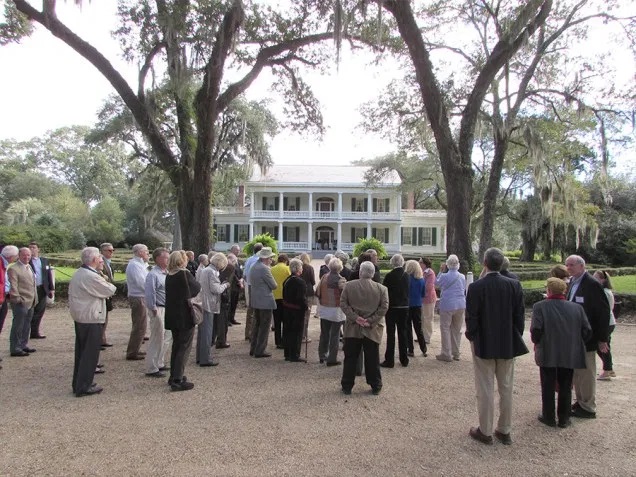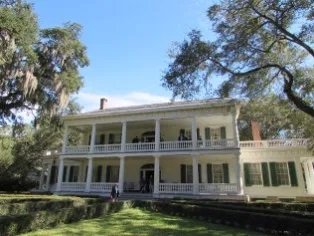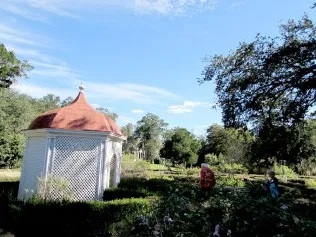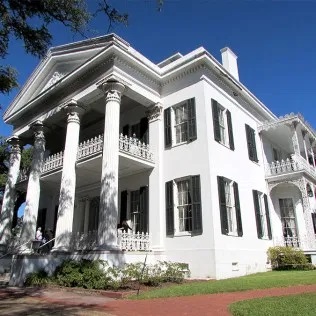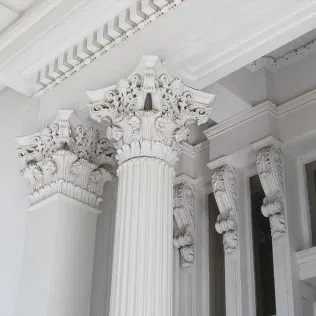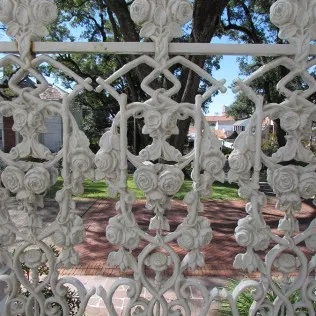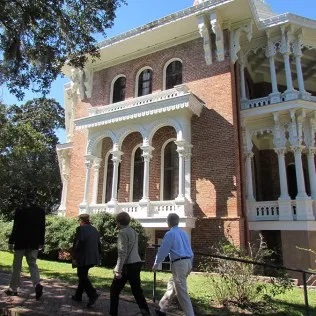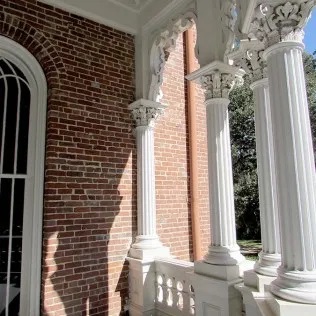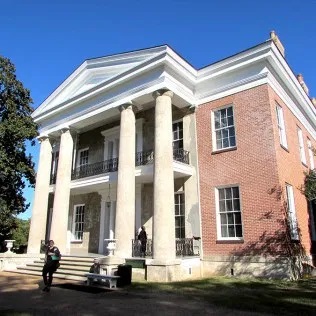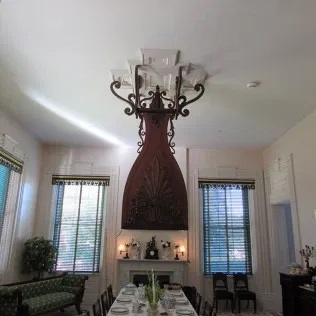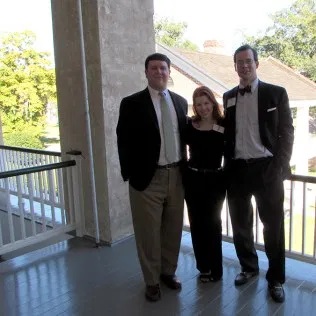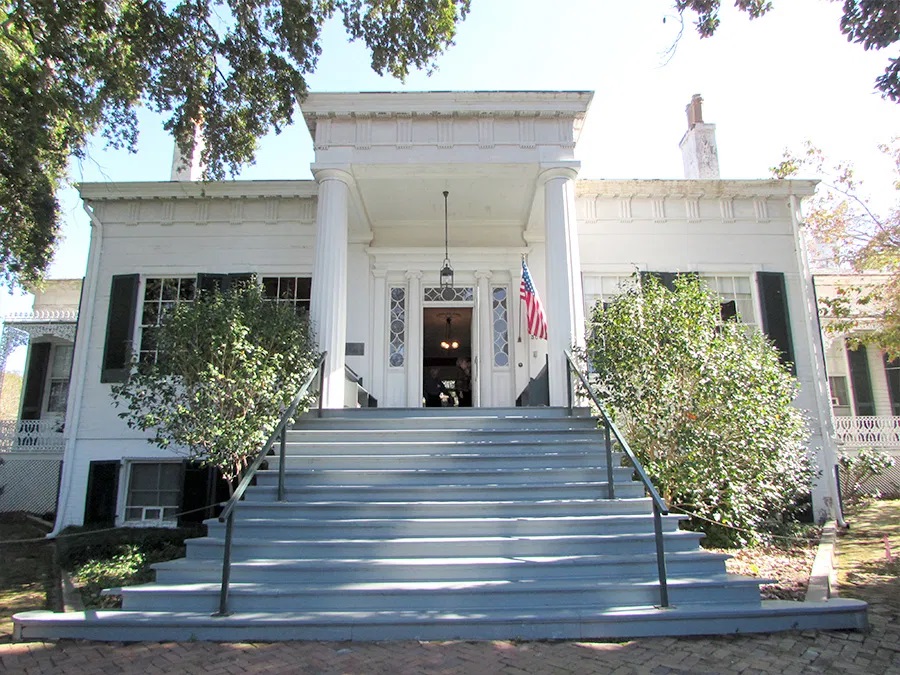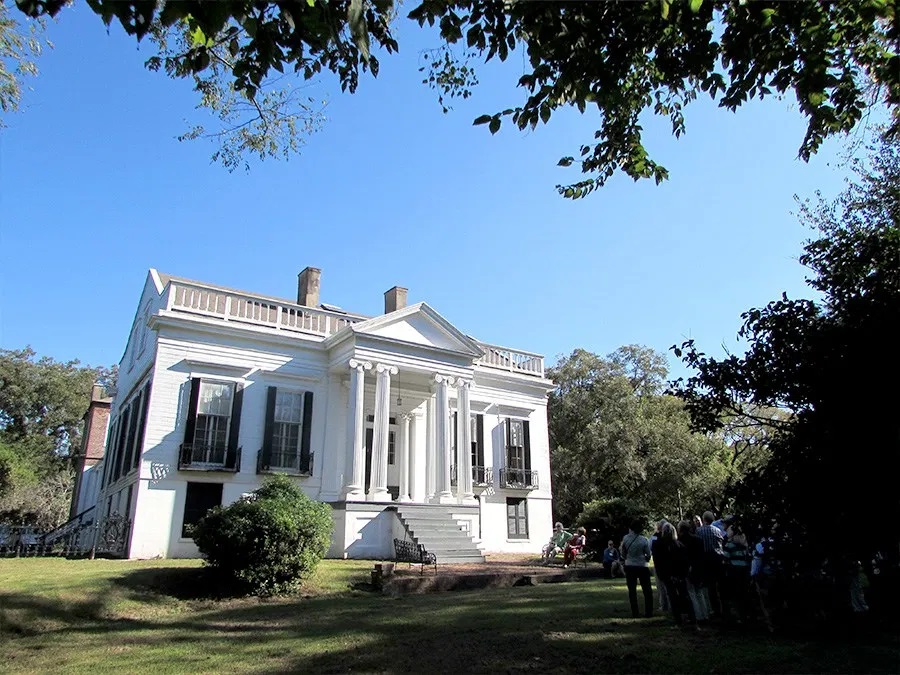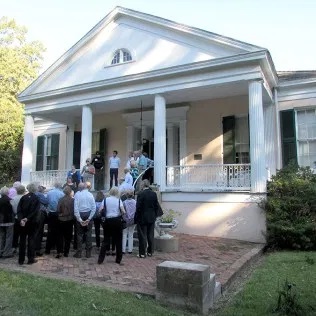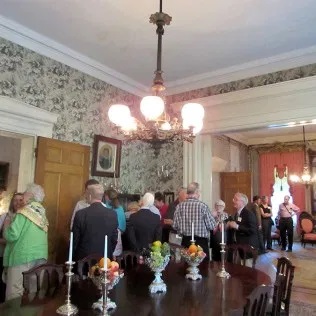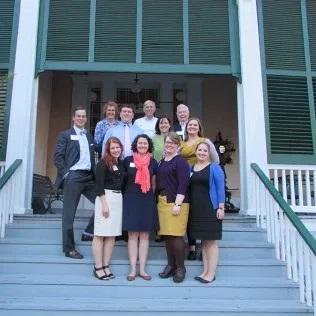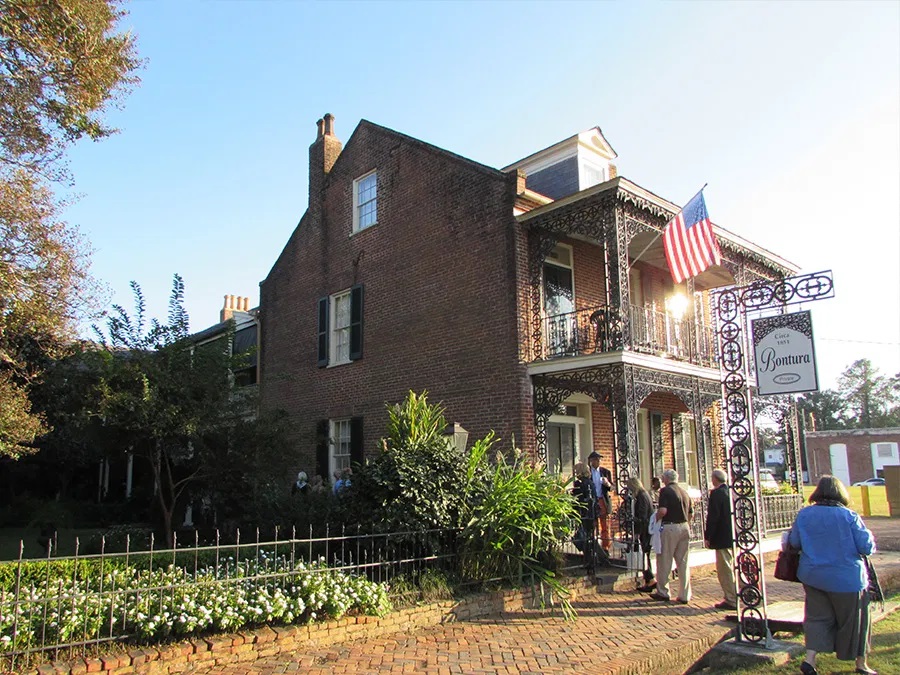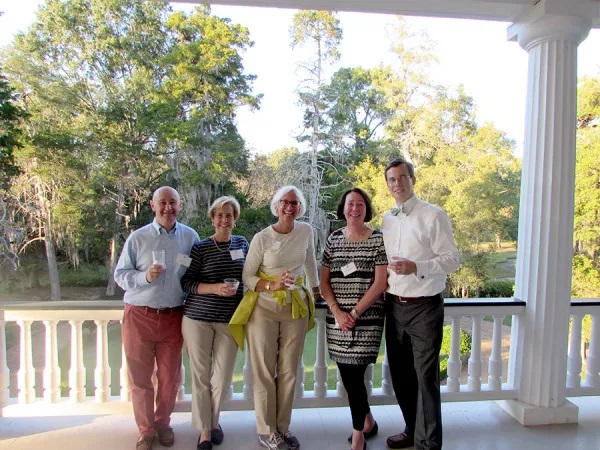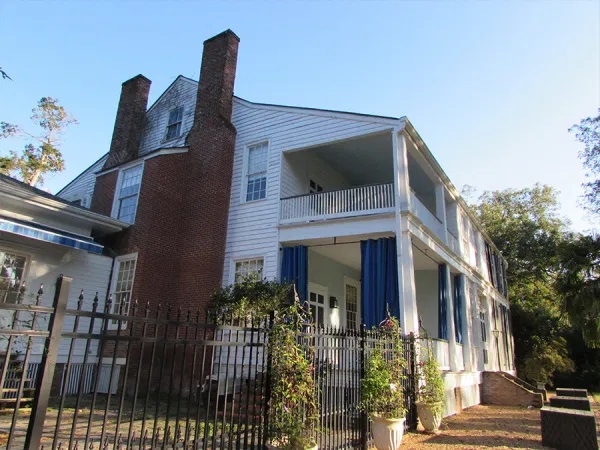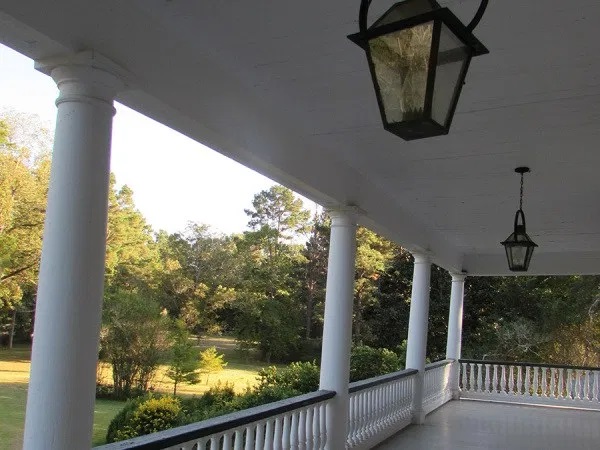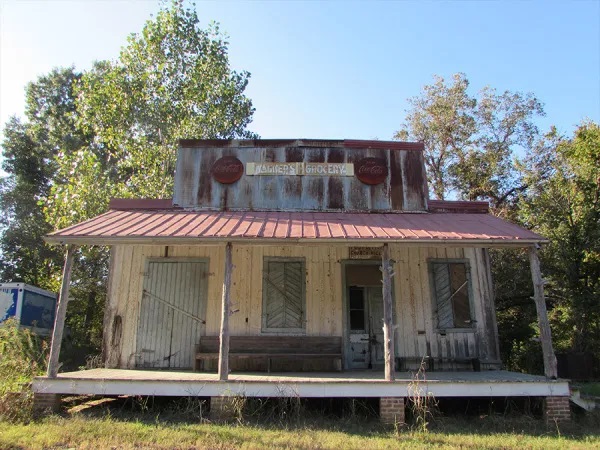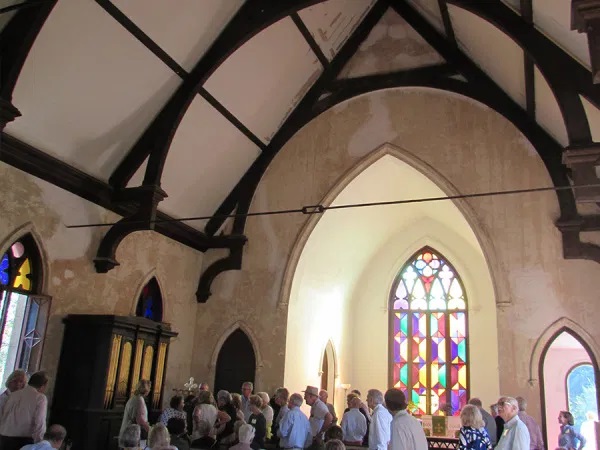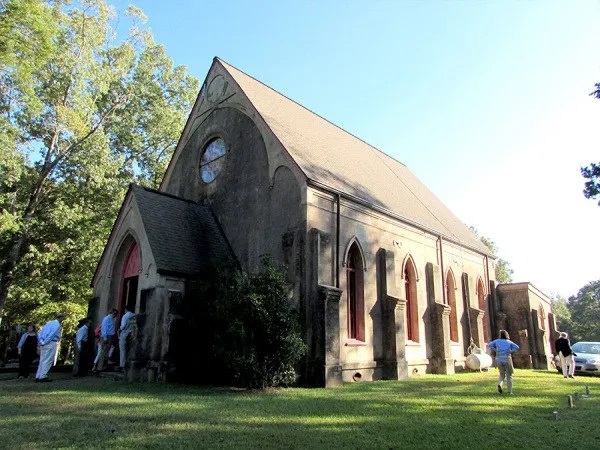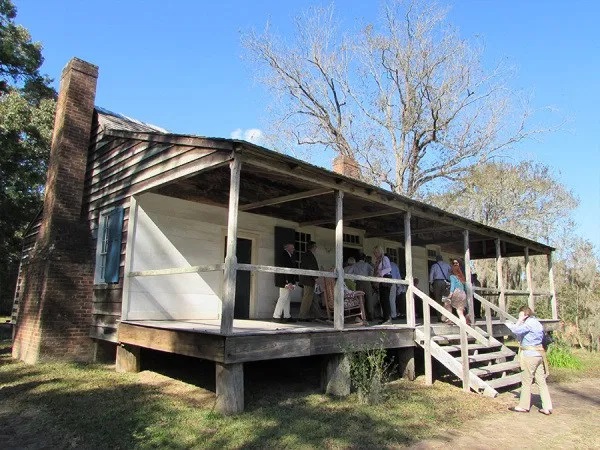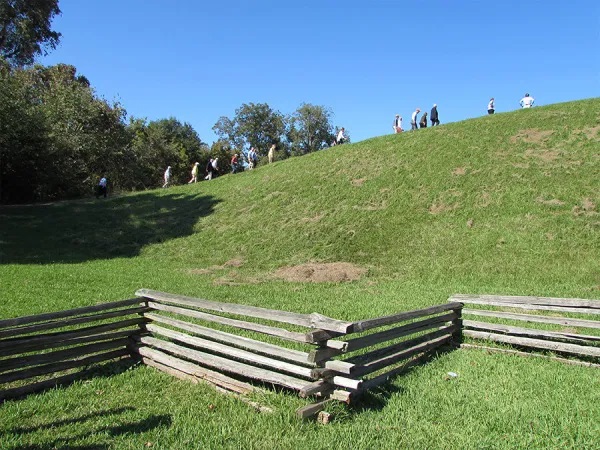The Natchez Symposium: The Treasures of the Trip
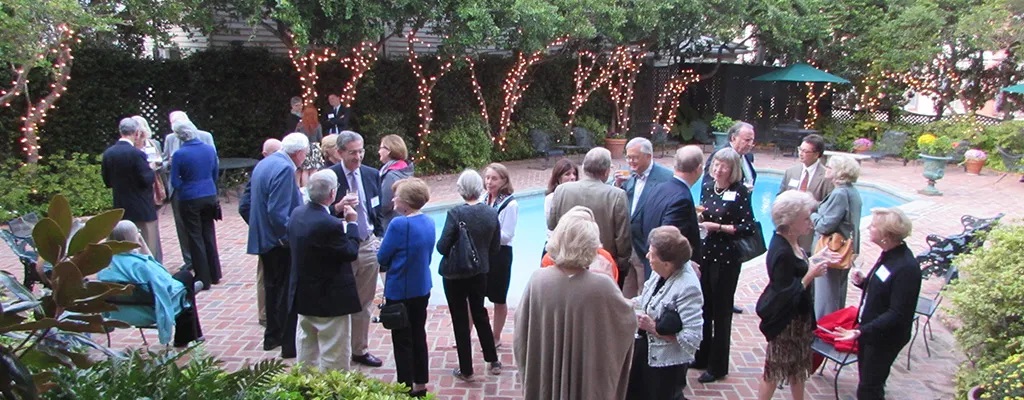
The Natchez symposium, Historic Natchez: Jewel of the Lower Mississippi, was a delightful look at a unique destination, and we could not have asked for more knowledgeable and gracious hosts along the way. Welcomed by both the Historic Natchez Foundation and the Natchez Historical Park, we were so impressed by the hospitality and the work that they are doing to preserve the local treasures in Natchez that we awarded grants to both organizations.
Here’s a sampling of what we saw and learned about in Natchez. Those who joined us early for the Thursday optional tours had the pleasure of visiting Rosedown, Wakefield, Butler Greenwood, and Oakley.
Rosedown Plantation
The main house on Rosedown Plantation was built in 1834-35 by Daniel and Martha Turnbull. At its largest, the plantation grew to approximately 3,455 acres, most of which were planted with cotton. As a result, Turnbull was known before the Civil War as being one of the wealthiest men in the nation. Upon building the house, the Turnbulls turned to the finest furniture makers in the North and Europe, and many of the pieces they purchased remain in the house, including a suite of furniture by the Philadelphia cabinetmaker Anthony Quervelle.
The gardens at Rosedown were made remarkable by the efforts of Martha Turnbull. In her lifetime, she expanded the formal gardens to include almost 28 acres of the property in the tradition of the formal European gardens she had seen in France and Italy when the couple honeymooned there.
It was good fortune that when the house was sold in 1956 to Catherine Fondren Underwood, she took it upon herself to begin an eight-year restoration project that included the gardens. Ralph Ellis Gunn used the garden diaries of Mrs. Turnbull to reconstruct the gardens as close as possible to their original design.
Wakefield
We had a delightful picnic lunch at Wakefield, the house of Sarah Turnbull Stirling, whose brother built Rosedown. Wakefield was built just a year later, and while it has been altered, the first floor rooms remain intact, and much of the furniture made by New York cabinetmaker Duncan Phyfe can still be seen in the house.
Wakefield was built by the Stirlings when their children had already left home, but the house features many bedrooms as the couple entertained many visitors. They visited New York City to purchase items for their new home and spared no expense. In addition to furniture from Duncan Phyfe, they purchased chairs from Oliver Edwards and Cyrus Baldwin. The Stirlings also ordered draperies and decorative wallpaper while in New York.
Butler Greenwood
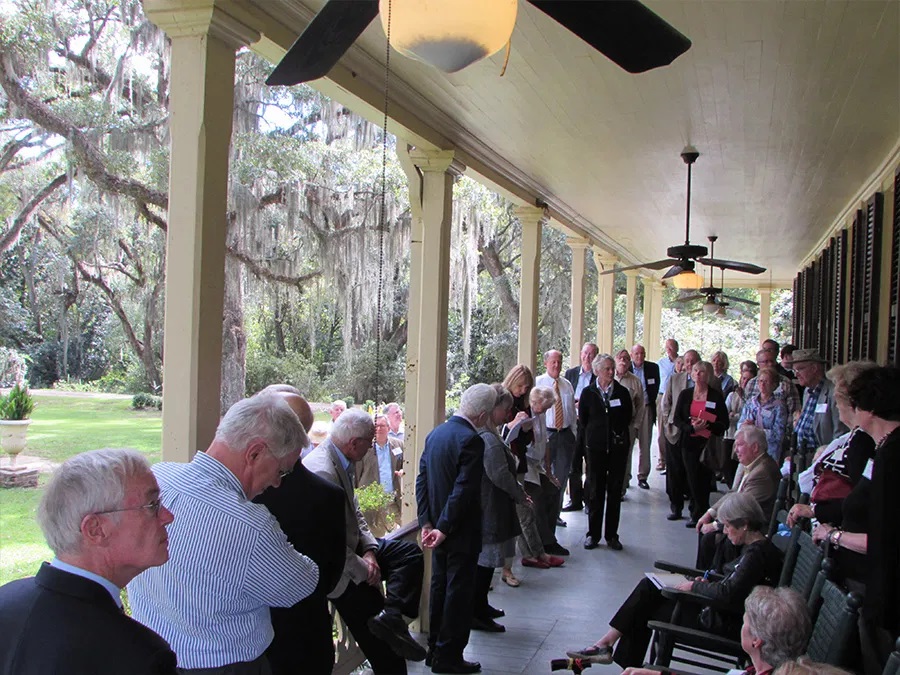
Butler Greenwood is currently looked after by author and historian Anne Butler. Butler represents the seventh generation of the Flower, Mathews, Lawrason, and Butler families who have maintained the home. The parlor at Butler Greenwood is nearly untouched from when Harriet Flower Mathews decorated it with a suite of rosewood furniture she ordered from Hubbell & Curtis in Bridgeport, Connecticut in 1859 and 1860. Today the room, as a result of Anne Butler’s efforts, is destined to be interpreted and preserved by the professionals at New Orleans Museum of Art.
The collection has also been inventoried by the Classical Institute of the South and is accessible via online database.
“Thank you for the utterly delightful days in Natchez. Even though it was not my first visit there, I found new enlightenment and perspective. It was a treat from start to finish.”–Marilyn N.
Oakley
 Our next tour was at Oakley Plantation House which is now part of the Audubon Memorial State Park in West Feliciana Parish. Construction of the house began in 1799 for Ruffin Gray who purchased the land from Spanish authorities. While Gray died before the house was completed, his wife Lucy Alston remarried James Pierre of Scotland. The two had a daughter, Eliza, and they brought John James Audubon to the plantation in 1821 to serve as Eliza’s tutor. While Audubon only stayed at Oakley for four months, it was here that he painted 32 of the works that would later become part of his Birds of America.
Our next tour was at Oakley Plantation House which is now part of the Audubon Memorial State Park in West Feliciana Parish. Construction of the house began in 1799 for Ruffin Gray who purchased the land from Spanish authorities. While Gray died before the house was completed, his wife Lucy Alston remarried James Pierre of Scotland. The two had a daughter, Eliza, and they brought John James Audubon to the plantation in 1821 to serve as Eliza’s tutor. While Audubon only stayed at Oakley for four months, it was here that he painted 32 of the works that would later become part of his Birds of America.
Stanton Hall
Next we saw the Greek Revival style Stanton Hall that has Italianate detailing, like most Natchez mansions from the period of 1855-1860. While we only have exterior photos to share of this National Historic Landmark, we can assure you that the interior is grand and true to its origins. Photos taken at the time of owner Frederick Stanton’s death document the original furnishings and show the eclectic style typical of the mid-19th century. Among the treasures to be found at Stanton are original gasoliers and sconces by Cornelius and Baker of Philadelphia.
Longwood
Longwood, another National Historic Landmark, that, like Stanton Hall, is opened to the public daily by the Pilgrimage Garden Club, has a unique history. While the house is America’s largest octagonal house, construction of the structure was never completed as a result of the Civil War. Haller and Julia Williams Nutt hired architect Samuel Sloan of Philadelphia to build the Italianate mansion that is crowned by a Moorish dome. Northern masons and carpenters were brought in to build the house, but when the Civil War began in April 1861, the Northern workmen went home. Because the house was unfinished, Nutt and his family made the basement of Longwood a temporary home, but Nutt died in 1864 and, as a result, the family continued to live in the basement. The house remains unfinished, but a lithograph prepared by Sloan’s office shows what it would have looked like had it been completed.
Melrose
Yet another National Historic Landmark and another Greek Revival house, Melrose, built for Pennsylvania native John McMurran and his wife Mary Louisa Turner, is a grand Natchez mansion. Of interest at Melrose are several architectural details that are related to the area’s climate. These include a jib window, a dining room punkah, a staircase in the secondary lateral stair hall, and hinged windows in the clerestory to vent the attic. Original furnishings, formal gardens, a landscaped park, and original outbuildings all add to the experience.
Green Leaves
While Green Leaves is another example of a Greek Revival in Natchez, it is unique because it was built with prefabricated materials. Local builder Thomas Seaton is credited with the construction of the house from the prefabricated materials; however, it is unlikely that he designed the sophisticated house. Today it is an excellent example of mid-nineteenth-century taste thanks to the efforts of the descendants of George W. and Mary (Beltzhoover) Koontz who have carefully preserved the house, its furnishings, and its gardens. The fully enriched Doric portico makes for a notable façade while the interior boasts lavish finishes.
Richmond
Richmond is a unique house because it was built in three distinct stages: 1) a simple one-and-a-half story gabled-roof house built on a raised basement from as early as 1784, 2) a double-tiered gallery addition during the Federal period, and 3) a Greek Revival addition ca. 1840. This third addition was made by Levin and Sarah Marshall and is still owned by their descendants, Lela Jeanne Nall and Anna Mary Rowell, who hosted the Trust at the house.
Lansdowne
Also owned by Marshall’s descendants, Lansdowne was purchased by Levin Marshall’s son George Marshall and his wife Charlotte Hunt Marshall in 1853. While the house is a single story, the interior is grand in scale and as finely finished as many other Natchez mansions. The house features a central hall that extends the full depth of the house. The property has original outbuildings that functioned as the kitchen, billiard room, privy, and quarters of enslaved servants. Among those things the family has successfully preserved at Lansdowne are the original wallpaper in the parlor and the original marbled and oak-grained painted finishes on the interior. It also has the original Cornelius and Company gas fixtures. The house at one time had its own private gas plant. The original furnishings on display include a Rococo Revival parlor, Romanesque Revival dining chairs, and an assortment of Gothic Revival, Elizabethan, and Renaissance Revival furniture in the hallway.
Bontura
Our last main tour in Natchez was at the home of Free African Americans Robert and Ann Smith who built the house in 1851. Smith was born free in Maryland and purchased his wife and children while he was living in New Orleans. After freeing them, he moved the family to Natchez and ran a successful dray and carriage business. Smith died in 1858, and Joseph and Fanny Bontura purchased the house from Ann Smith. The couple added a two-story wing that included an inn for travelers. The house is a simple Greek Revival brick townhouse with side hall plan. The house is currently privately owned by Dr. and Mrs. James Coy, and we thank the Coys for allowing us to host our receptions at Bontura.
Many Natchez attendees stayed on for an extra day to see a number of the sites at Plantation Countryside. Enjoy some of the photos from Plantation Countryside below.
About The Decorative Arts Trust Bulletin
Formerly known as the "blog,” the Bulletin features new research and scholarship, travelogues, book reviews, and museum and gallery exhibitions. The Bulletin complements The Magazine of the Decorative Arts Trust, our biannual members publication.








